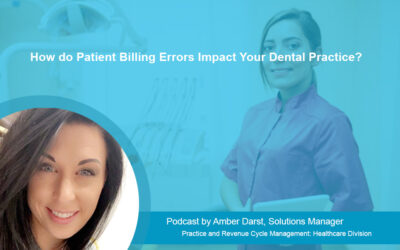Based in Tulsa, Oklahoma, Outsource Strategies International (OSI) is an experienced healthcare business process outsourcing company providing high quality medical billing, coding, and insurance verification and authorization services for all specialties, ranging from Anesthesiology, Internal Medicine, General and specialized surgery, Cardiology, Gastroenterology, Neurology, Pain management, and many more.
In this podcast, Natalie Tornese, OSI’s Senior Solutions Manager discusses spinal stenosis and its documentation.
Read Transcript
Hello, everyone and welcome to our podcast series. My name is Natalie Tornese and I’m a Senior Solutions Manager with Outsource Strategies International. I wanted to take this opportunity to talk to you about spinal stenosis.
What is spinal stenosis?
Spinal stenosis is a condition that causes abnormal narrowing in the spinal canal, which limits the amount of space available for the spinal cord and nerves. As spinal stenosis becomes more severe, there is compression or squeezing of the spinal cord and its nerves. This spinal condition can occur anywhere in the spinal canal, but it is most common in the cervical and lumbar spine. One of the most common reasons people develop spinal stenosis is degenerative arthritis or bony and soft tissue changes that can result from aging. This condition is most commonly seen in patients above the age of 50 and can become progressively more severe with increased age. However, not everyone develops spinal stenosis as they become older. People who have a spinal or back problem, family history of spinal stenosis, laborers, athletes, and people with certain connective tissue diseases such as ankylosing spondylitis, have an increased risk.
What are the symptoms of spinal stenosis?
Spinal stenosis is most commonly caused by the wear-and-tear changes in the spine related to osteoarthritis. Some of the other causes of this spinal disorder may include herniated disks, thickened ligaments, overgrowth of bone, tumors, and spinal injuries. In severe cases of spinal stenosis, physicians may recommend surgery to create additional space for the spinal cord or nerves. The symptoms of this condition may depend on where the stenosis occurs in the spinal column and can vary from patient to patient, ranging in severity from minor to even crippling.
The location and severity of the condition may determine the type of symptoms you may experience. In some cases, people with spinal stenosis may not experience any specific symptoms. Others may experience some common symptoms which can include –
- Neck pain
- Pain, numbness, and tingling, or cramping in the arms, foot or leg
- Weakness in a hand, arm, foot or leg
- Problems with walking and balance
- Tingling, numbness, or pain that radiates from the lower back into the buttocks and legs
- Hot or cold feelings in the legs
- Lower back pain while standing or walking
- Weakness along the path of the nerve that is being compressed, and
- Bowel or bladder dysfunction which can include urinary urgency and incontinence in severe cases
How is Spinal Stenosis Diagnosed and Documented?
Well, for those experiencing symptoms of spinal stenosis, physicians will begin the diagnosis by enquiring about the initial signs and symptoms, evaluating previous medical history of the patient, performing a detailed physical exam and observing patient body movements. Physicians may conduct several diagnostic imaging tests to confirm a suspected diagnosis of this spinal disorder. These diagnostic imaging tests include –
- X-rays, MRI scans, CT scans which can be used to view images of the spine
- Electromyelograms to check the health of spinal nerves
- Bone scans to look for damage or growths in the spine and others
Treatment for this spinal condition mainly focuses on understanding the risk factors, reducing symptoms, and relieving severe pain. The first line of treatment should begin with non-surgical modalities such as physical therapy exercises, epidural steroid injections, and electrical nerve stimulation along with non-steroidal anti-inflammatory medications. In most cases, spinal stenosis can be treated without surgery. Physicians who provide specialized treatment to the patients are reimbursed for their services. Accurately diagnosing the condition and submitting the proper clinical documentation helps in promoting error-free billing practices.
Please see the provided transcript along with this podcast for the list of ICD-10 codes and their respective description.
Spinal stenosis can lead to gradual but steady loss of strength in the legs. The severe pain caused by this condition can be quite disabling and affect your day-to-day life. However, there is no cure for this condition as it most commonly occurs due to degenerative arthritis that occurs with regular aging. However, you can take several important steps to help limit the severity of symptoms. Always maintain a healthy body weight and doing regular exercises such as flexing, stretching along with strengthening exercises could all help with this disease. Patients should try to modify their physical activities and take care not to get engaged in any type of activities that can trigger or worsen pain and disability such as lifting heavy objects or walking long distances. Practicing good body posture and proper body mechanics can also help this condition to a great extent.
Providers, always remember that documentation and a thorough knowledge of payer regulations and guidelines is crucial to ensure accurate reimbursement of all procedures performed.
Thank you for listening!



